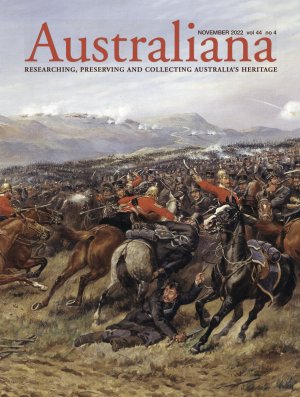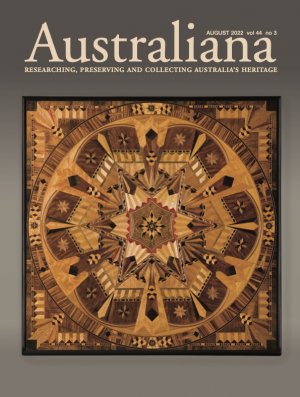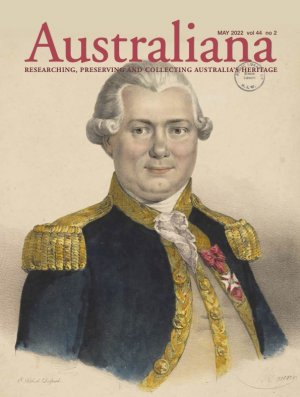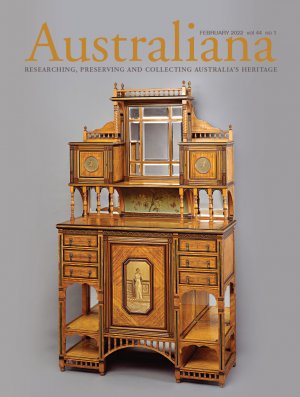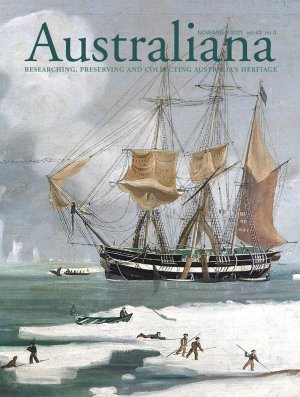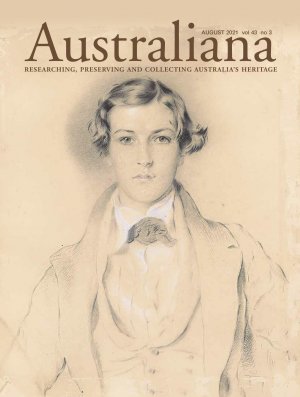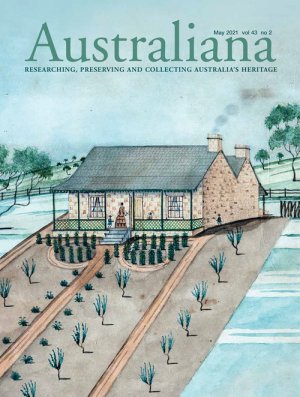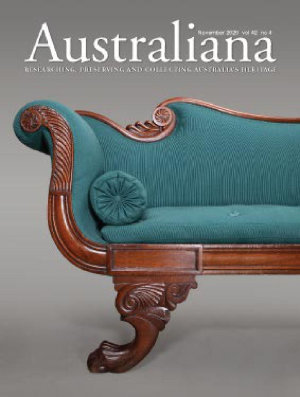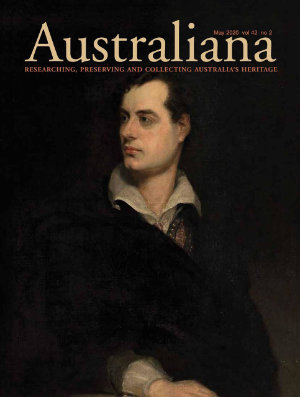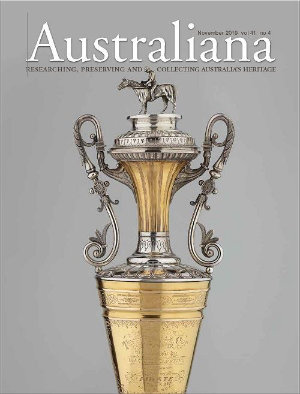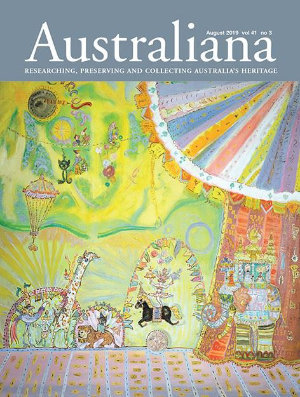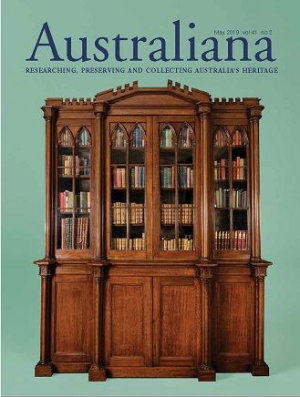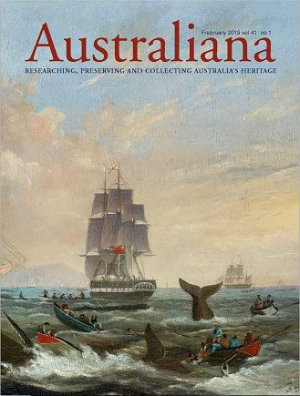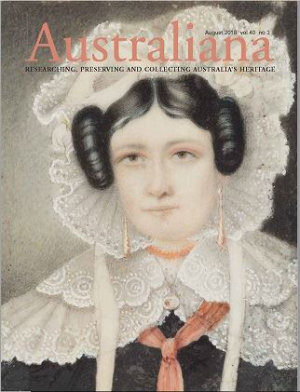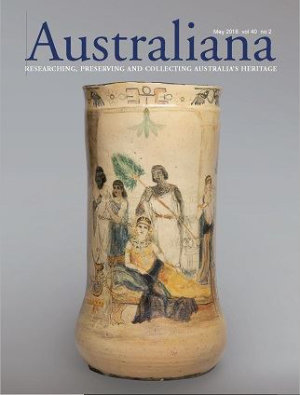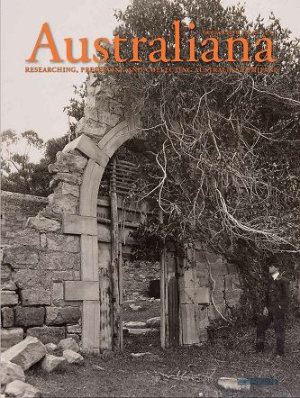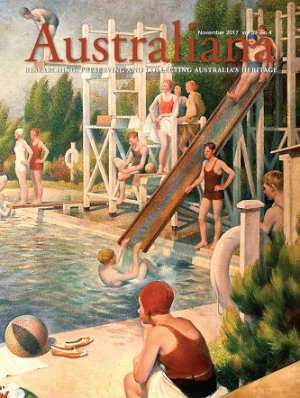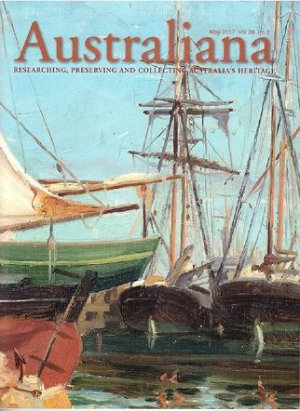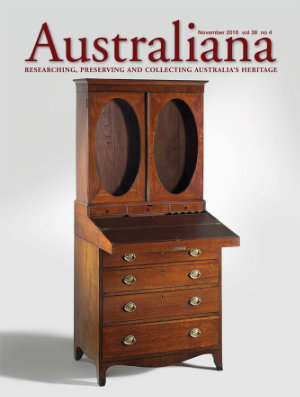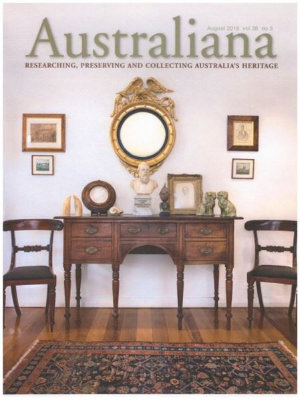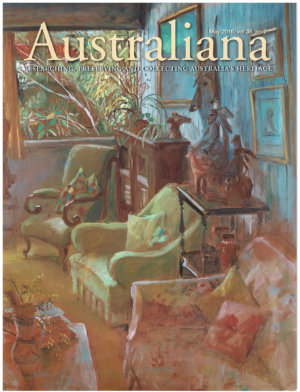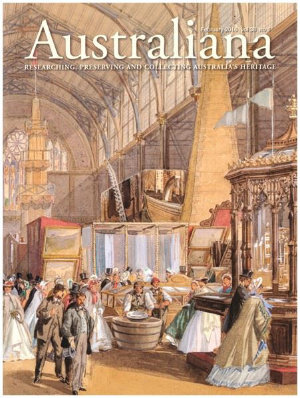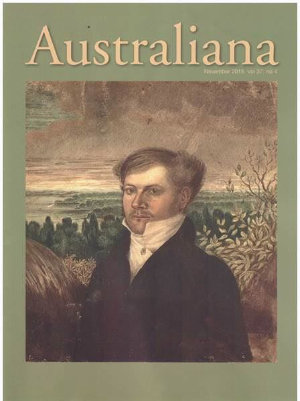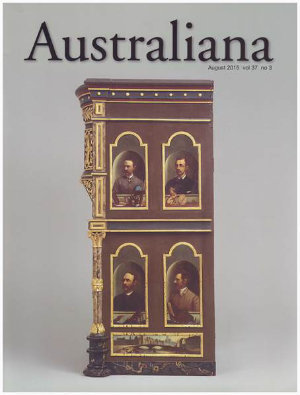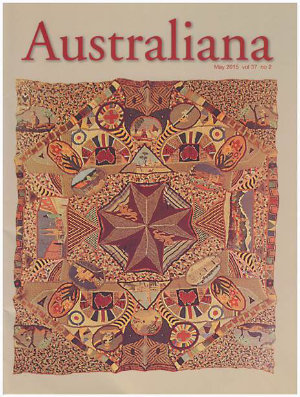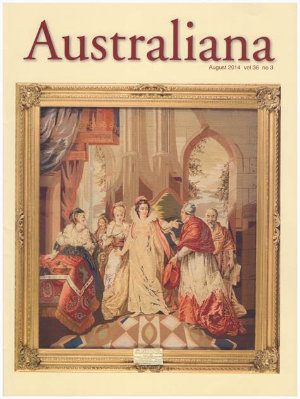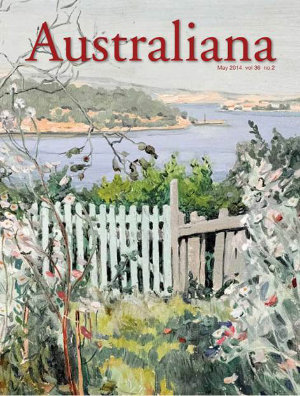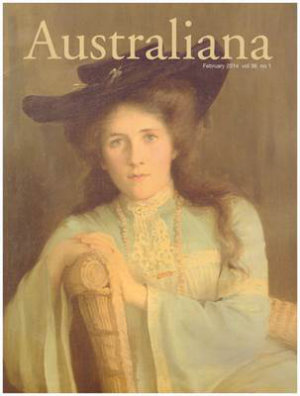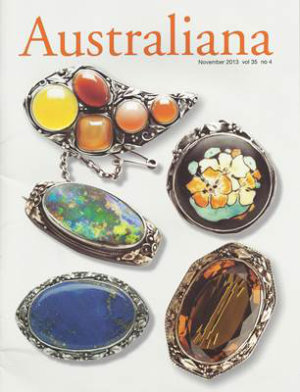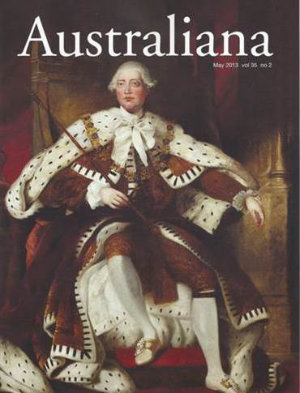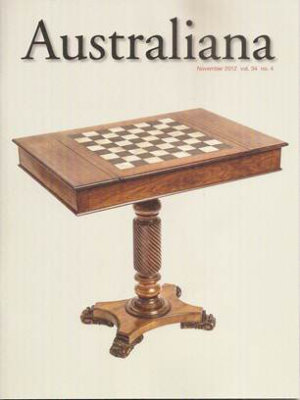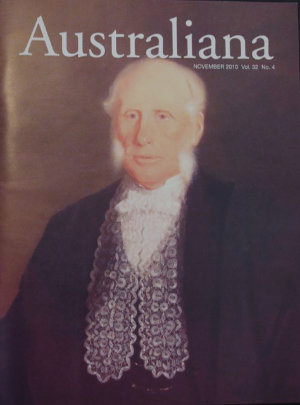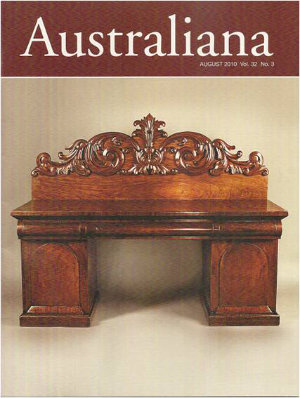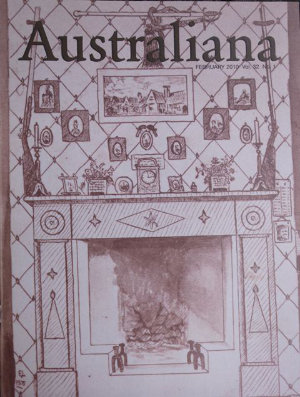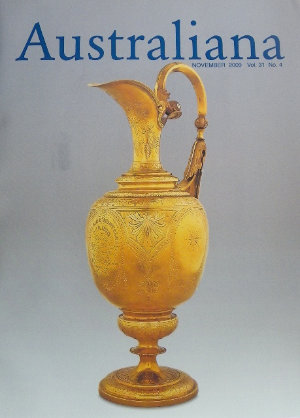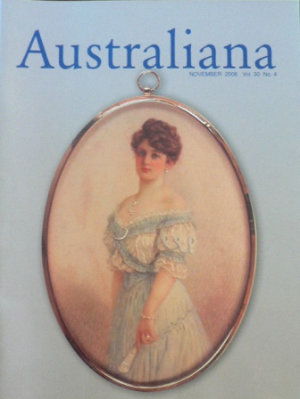From the foundation of the colonies, local cabinetmakers experimented with using the wide range of native timbers. Bob Fredman discusses a chest of drawers, most likely made about 1900 in Bundaberg, Queensland and probably by a local cabinet maker of Germanic heritage, who liked to use contrasting timbers with ...
Many colonial woodworkers, often trained in Britain or Europe, came to Australia and discovered the vast variety of native timbers suitable for carving or for making furniture and timber articles. Jewellery ‘book boxes’ made from several contrasting North Queensland timbers and bearing the stamp of ‘H.A. ...
Thomas Griffiths (1856–1943), a Welsh blacksmith and wheelwright, emigrated to Queensland to start a new life as a ‘skilled migrant’, at first clinging to his old profession in the Ipswich area. When the Queensland railway network was expanding, he saw
a new business opportunity and opened a sawmill at...
Thomas Griffiths (1856–1943), a Welsh blacksmith and wheelwright, emigrated to Queensland to start a new life as a ‘skilled migrant’, at first clinging to his old profession in the Ipswich area. When the Queensland railway network was expanding, he saw a new business opportunity and opened a sawmill at Wy...
When furniture or crib board collecting becomes too hard, because of either their cost or scarcity or both, the average Australiana collector can turn to drinks trays. They can turn to drinks too, but this article is just about the trays.
The box seen here shows the superb carving of John Kendrick Blogg, a successful and entrepreneurial industrial chemist who was born in 1851 in Canada, settled in the Surrey Hills region of Victoria in 1877 and died in 1936. His day job involved making perfumes and extracting essential oils. Family legend has it...
Most craftsmen who emigrated to colonial Australia were trained in the English, Scottish, Irish or German traditions. In Western Australia, several Spanish craftsmen were attracted by the monastery established by their compatriot Bendictine monks at New Norcia. Western Australian craftsmen, mostly using jarrah ...
Objects and art shown at international exhibitions always attract a premium. Often, they really were ‘showpieces’, specially made to demonstrate the maker’s skills, ability and cutting-edge design. Three room suites of W. H. Rocke’s furniture displayed at the prestigious Melbourne International Exhibiti...
Decorative timber inlay work became popular in British and European furniture and other wooden items in the 18th century. European exploration of the so-called New World tropics and subsequent colonisation gave access to a greatly increased range of superb cabinet timbers. Cabinetmakers initially concentrated o...
In the preceding article, David Bedford identified four Australian manufacturers of cribbage boards: Grose Manufacturing Co of Brisbane; Clipsal, a brand name of Gerard Industries in Adelaide; John Sands & Co, founded in Sydney as Sands & Kenny in 1851; and Crown Mulga made by A.W.G. Davey & Sons Lt...
Both plain and novelty cribbage boards have been produced around the world for about 400 years. Australian-made cribbage boards can only be post–1788 and at this stage I know of no boards dating before the early 1800s, though very plain boards are difficult to date accurately. By the mid-19th century, many no...
One of the most distinctive timbers in Australia comes from trees known by their common name as casuarinas. In botanical taxonomic terms, there are actually two main genera growing in Australia: Allocasuarina and Casuarina. A third genus, Gymnostoma, is restricted to far north Queensland. The timber characteris...
The cabinet maker James Whitesides (c 1803–1890) arrived in Hobart from Ireland in 1832. He came to the colony with established woodworking skills and in the company of fellow artisans William Hamilton and John McLoughlin. The three opened business premises as Hamilton & Co in Argyle Street, but in Octobe...
In the 1930s, Henry McPherson, a former Clerk of the House of Assembly, told this story about William Peter Briggs, an employee of Whitesides, and the 1856 Governor’s (now President’s) Chair... This story is apocryphal. Though we normally think foremost of German immigration to South Australia, a German shi...
British and Irish emigrant craftsmen working in early colonial New South Wales and Tasmania brought with them the Classical Revival style, with its sweeping curves and carved decoration. This elegant furniture, mostly in cedar, and inspired by the re-discovery of ancient civilisations, has many admirers. Bob Fr...
German settlers in South Australia, notably in the Barossa and to a lesser extent in other parts of Australia, introduced a furniture style based on the rural carpentry traditions of their native lands, rather than the more common styles seen in Australia derived from British cabinetmaking. David Bedford and Ri...
David Bedford has researched the life and work of Tasmanian cabinetmaker Richard Dowling (c 1820/1822–1867), little documented till now. He presents new discoveries about Dowling’s life and suggests why Dowling’s story has been so elusive. Evidence has emerged, and examples of his work found, which show t...
This is the tale of a table and desk, the first an historic table made by a master craftsman who as an apprentice is reputed to have made one of Queen Victoria’s wedding presents as well as a chair presented to the Queen of Spain. This man made our table in Western Australia from native jarrah for a well-know...
The November 2018 issue featured the carved furniture of a young woman, Alice Maud Golley (1884–1961) who lived an isolated life with her immediate family on remote Wedge Island in the Spencer Gulf of South Australia. Golley’s furniture is a virtuoso display of skill and grace, yet she was untrained. Among ...
Three South Australian researchers explore the possible genesis and history of a massive red gum bookcase which came up at an Adelaide auction in 2017. Using a variety of evidence, sources and methods, they identify the bookcase as a very early piece of South Australian furniture and mount a case for who commis...
You might easily pass by, without noticing, a basic item of furniture with little decoration or character, but a closer look can be revealing. Dr Philip Reid brings to life a small pine table, through a paper label pasted underneath, which reveals its maker, date, means of delivery and destination – the Hospi...
Furniture restorer Paul Gregson follows up Dr David Bedford’s article on “hide glue” in Australiana for November 2018 with some practical advice, although he suggests that a demonstration is more informative to understand the process.
David Bedford cautions against using modern glues for antique furniture restoration, recommending instead that you stick with old-fashioned animal glues.
The design and manufacture of a writing desk for the Bank of New Zealand, Dunedin (1879–83). We are familiar with immigrants trained in Britain or Europe coming to Australia and continuing their craft, or with Australian artists travelling to Europe to learn and expand their skills and ideas. Rarely have we l...
If you think that a history of the numismatic collection held by the Art Gallery of South Australia would be a dry read of limited appeal, you are certainly in for a pleasant surprise with Peter Lane’s new book. It is a good read, full of life and interest.
The first study into our furniture history appears to be by John Earnshaw, a retired engineer. The name ‘W. Beatton’ stamped on an old cedar chiffonier aroused his curiosity. Earnshaw investigated further and produced a slim book, Early Sydney Cabinetmakers, in 1971 which resulted in devotees, students, his...
The star item of furniture in the late Caressa Crouch and Carl Gonsalves collection was a cedar sideboard, of very early date, made about 1815–20. The sideboard, which they loved and had left virtually untouched, summed up all that was exceptional in Caressa and Carl’s collection, which focused on Tasmanian...
By examining the innovations in the various editions of the London and Edinburgh cabinet-makers’ books of prices, as well as identifying the decorative details favoured by Irish cabinet-makers, John Hawkins suggests that it is possible to develop a chronology for the important group of early Sydney furniture ...
The Queen Victoria Museum and Art Gallery in Launceston claims that Peddle chairs are “Tasmania’s best known antique”, so that probably justifies a book about them. And who better to compile it than Denis Lake, a Launceston furniture restorer, who can combine research with his detailed practical knowledge...
Trove and family histories have recently revealed information about Edwin Foss Duffield (1846–1922), a colonial-born craftsman of distinction in Western Australia. He commenced working in Fremantle in the late 1860s as a cabinet maker and undertaker, and a number of pieces of furniture from his workshop survi...
Since opening an art gallery last year that includes a display of early cedar furniture, Bob Fredman has been fascinated to see that the furniture strikes a strong chord with nearly all visitors. They unfailingly comment on it being beautiful, and especially take an interest when they find out it is all Austral...
Prestigious Melbourne cabinet maker Geo. Thwaites & Son operated from 1842 to 1889, providing high-class furniture for Victoria’s mansions, homesteads and prominent institutional and public buildings. Today the firm is best remembered for its contracts to furnish Government House in 1854 and again in 1875 and...
Museums tend to lift items out of the ordinary world into the refined orbit of curators. In detailing the history of a collection of Krimper furniture bought by a Sydney family, Catriona Quinn shows the importance of knowing the history of an object, its owners and context – its provenance – and argues that...
In the 19th century, an appropriately draped “chair of state” under a canopy was deployed on formal occasions when the monarch or her vice-regal representative was present. These chairs were conspicuously larger than any surrounding chairs, acknowledging the status of the occupant. Dr La Nauze traces the hi...
The first update to my book Convict and Free: the Master Furniture-makers of NSW 1788–1851 will be available on CD in December, with at least two new chapters, on Thomas Mercer Booth and John McMahon. However, Australiana members may be interested to learn now that a reader from Ireland has provided me with d...
Tea drinking, that very British and colonial habit, is ingrained in our Australian culture and regarded by many as an essential daily ritual. tea is cheap and plentiful today, but this was not always the case.
dorothy erickson’s research for her new book Inspired by Light and Land: Designers and Makers in Western Australia 1829–1969 has uncovered more information about objects made in Western Australia and their makers. Her previous articles published in Australiana on Amy Harvey, William Howitt, Charles May and ...
An early colonial library table in the neo-classical style, with a maker’s label for Clarke of Castlereagh Street, Sydney, c. 1835, came to light in a distressed state a decade ago. Warwick Oakman ponders who might have made the table, where such an impressive piece of furniture might originally have been use...
We all relish finding an unrecognised treasure in an out-of-the-way place. John Watkins discusses a chair bought at a country auction, and suggests that, during its 185 years, it may have travelled all the way from Woolley’s workshop in Hobart to the little village of Wooli in northern NSW.
In his new book Convict and Free: The Master Furniture-makers of Early New South Wales, David Kelly presents well-researched biographies of dozens of previously little-known cabinetmakers. Tasmanian and NSW cabinet-maker, undertaker and upholsterer Joseph Baronet Bridekirk is just one of them. His story is docu...
The construction of the complex and difficult-to-make oval cedar case for the Woodstock Challenge Cup (plate 1) illustrated in my article “Essie Jenyns and her Australian Terriers” has prompted me to wonder how and why it came into being. Recently I purchased for my reference library a complete set of the B...
